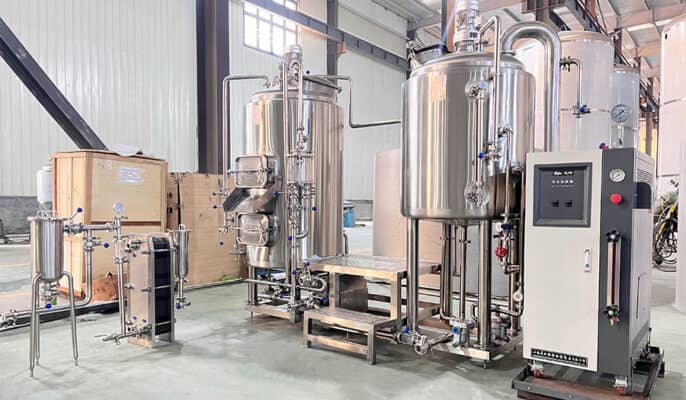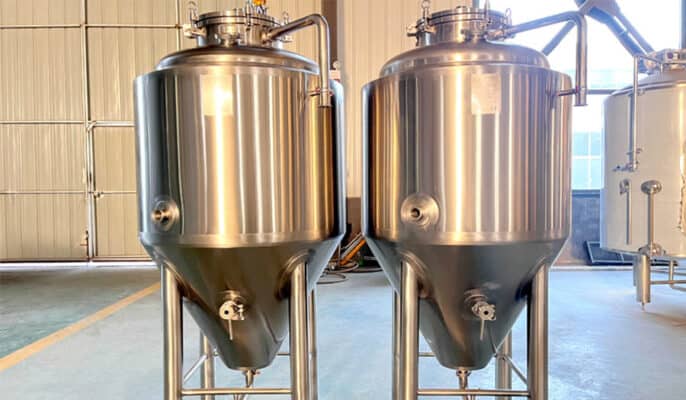The craft beer industry is booming, with more and more enthusiasts taking their passion for great beer to the next level by starting their microbrewery. To brew delicious beer, you’ll need some basic equipment to boil and ferment your ingredients. Whatever your reason for starting a brewery, there’s one question you’re faced with – how to choose brewing equipment? Deciding to start brewing beer is an exciting thing, but it can also seem quite daunting. Each stage of the brewing process requires different gear, as well as a few basic supplies. Here’s a comprehensive guide to the tools you need to brew delicious beer.
Determine the size of your brewery
All breweries are dependent on external criteria such as budget, floor space, market and even local regulations. Yet, opening a small brewery isn’t always pretty. If you start too small, you will find it difficult to expand your business later. Many breweries start with 5HL tanks and use a mix of 5HL and 10HL fermentation vessels. If you’re at a beer bar without a lot of seating, this might be enough.
Equipment needed for brewing beer
Brewing kettle
A brew jug is an essential tool. Depending on how big your batches typically are, you can choose a kettle with a capacity of five to twenty gallons. You need to boil the water and malt mixture in order to extract the sugars in the malt. Additionally, the hops used in the final brewing step will be boiled in the same pot. Therefore, it is best to have a brew tank that can hold at least 4 gallons of liquid.
The material composition of your brew tank is a major factor to consider, with both copper and stainless steel being good options. While stainless steel is cheaper and requires less maintenance, copper will provide better beer flavor due to its catalytic abilities.

Fermenter
A fermentation vessel (FV) is a tank in which beer is fermented. Today, most breweries are equipped with monoblock tanks. These tanks are used for fermentation and maturation of beer.
When wort is fermented into beer, a container is needed to hold the wort. Beer fermentation can be carried out in a variety of ways. Kegs, glass bottles, or plastic buckets can all be used to store finished beer. The amount of beer you want to brew will determine the size and shape of your fermentation vessel.
We choose plastic buckets or large bottles with lots of headspace on top as the easiest containers to clean. Glass is more heat-resistant than metal or plastic containers. If you have enough funds, stainless steel is the best choice.
Airlock
An airlock is inserted into the top of the fermenter, allowing carbon dioxide, a by-product of fermentation, to escape from the fermenter without allowing contaminants to enter. Depending on the fermenter, a plug is sometimes required to secure the airlock. Without an airlock, the pressure in the fermenter could cause the lid or stopper to pop off, or worse, the fermenter to explode!
Heating system
When brewing, you need lots of hot water and the ability to boil the wort in a kettle. This means you need a heating system. Choice of electric or steam. For larger breweries, steam over 7HL is always a better choice.
Steam is cheaper and provides a more even heat source. With electricity, you can caramelize the wort close to the heating element, which is not a good thing in most cases.
Siphon/Pipe
Siphons and pipes are a great way to simplify moving hot wort or finished beer without the hassle and mess of lifting and pouring a lot. Pumps liquid from one container to another without introducing too much oxygen or other contaminants into the beer.
Choose a blender
You will need a sterilized long-handled blender, stainless steel. Don’t use wooden utensils as they may contain microorganisms that could spoil your beer.

What auxiliary equipment is needed?
CIP : Used to clean fermenters and BBTs after they become empty and dirty.
Removable Pump: Used to clean the fermenter and BBT and transfer beer from the fermenter to the BBT.
Control Panel: You will need a control panel to regulate fermenter temperature and brewery.
Hoses: Beer hoses are needed to transfer beer from one tank to another as well on clean the tanks.
How long does fermentation take?
Fermentation usually takes a day or two to be visible and can be observed by the large head of dense foam that appears on top of the liquid, along with bubbling in the airlock as excess carbon dioxide is squeezed out. The foaming speed will decrease as the foam is produced, and after about a week, the foaming will stop. This indicates that fermentation is complete and you are ready to bottle.
Remember, if you need to move the barrel after fermentation has begun, do so and . First, it’s a big, heavy bucket, so try not to hurt yourself or spill it everywhere. The second is that the sediment that settles to the bottom is best left there, and stirring may bring “odours”. Third, you don’t want beer to spill on the lid as this can increase the risk of infection.
How much does beer equipment cost?
Starting a small brewery can be an exciting and rewarding try, but it’s crucial to understand the various startup costs and ongoing expenses involved. From market research and licensing to equipment, labor, and marketing, small breweries must significant investment. Start-up costs for a small brewery can vary , depending on factors such as location, size, and equipment. A small brewery may need an investment of approximately $100,000, while a large brewery may must $1 million or more.
Common problem
1.Do I need a specific license to open a microbrewery?
Yes, small breweries must get a beer notification from the federal TTB, as well as any necessary state and local licenses and permits.
2.How long does it take to start a small brewery?
The timeline for starting a microbrewery can vary depending on factors such as location, licensing requirements, and equipment delivery times. On average, it can take anywhere from 6 months to 2 years to get up and running.
3.What are the profit margins for a small brewery?
Profit margins for small breweries can vary, but industry averages suggest between 5% and 20%. Factors that influence profit margins include production efficiency, pricing, and marketing strategies.




